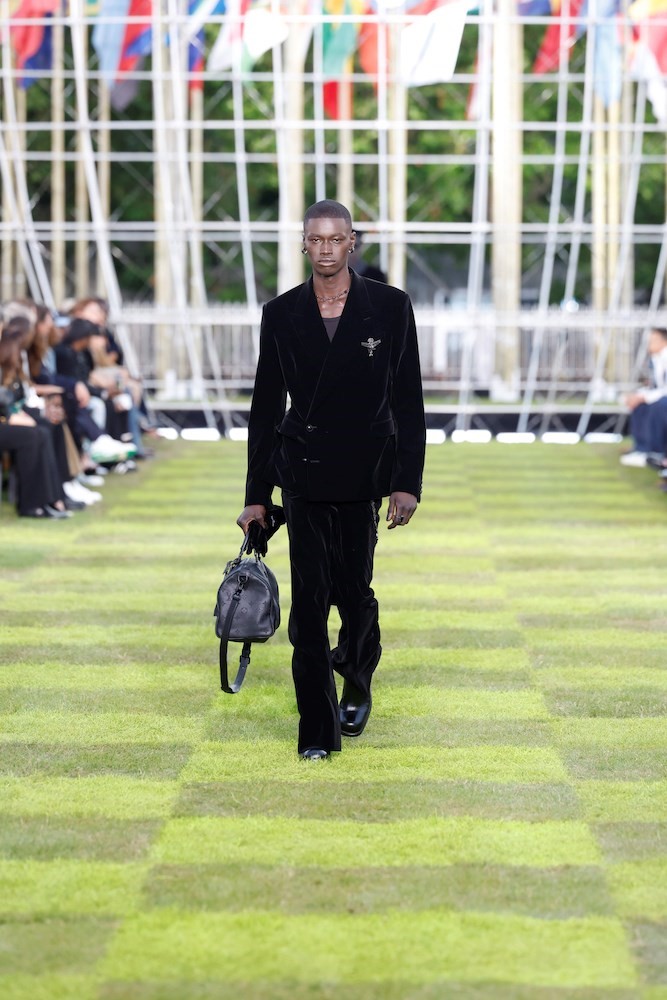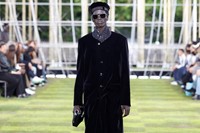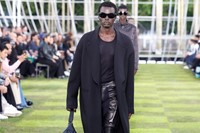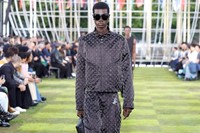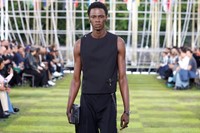Louis Vuitton is universal, that much is unassailable. People with no connection to fashion, or knowledge of its inner workings – young kids who hear its name in rap lyrics, old financiers who appreciate its place as the biggest luxury brand in the world – not only understand Louis Vuitton’s place within the fashion system, but recognise its signs and signifiers. The Monogram, the Damier – they’re now universal symbols. And, of course, Pharrell Williams is universal too; fashion designers today are celebrities, but generally that comes as a result of their job, not as part of their CV in getting the role in the first place. And it’s unique to have a creative director who is as cheered by the crowds as the celebrities they invite to their shows. That’s universal appeal.
So, with all that, it was fitting that Vuitton showed its Spring/Summer 2025 fashion show in the gardens of UNESCO – the United Nations Educational, Scientific and Cultural Organisation on Paris’ Left Bank. The ground bristled with a forest of flags of the world, banners fluttering brightly – a shorthand for individual countries, the way Vuitton’s logo and mixed, muted brown-on-brown colourings have become a shorthand for a state of luxury. And Williams drew inspiration from both, essentially - the tones of his collection were intended to represent the skin tones of humans across the planet – again, something all-encompassing, universal and inclusive.
Williams’ Vuitton collection itself roamed wide – travel is another influence and inspiration constantly behind Vuitton, reflecting all those fluttering flags. There was sportswear and suits, walking side by side, jumbled up without a sense of hierarchy or restriction. “The world is yours” was a phrase printed across denim separates, that served as a title and a call to arms – explore, it seemed to implore. The creative collective Air Afrique – who borrow their name from the Pan-African airline that operated from 1961 to 2002 – collaborated on graphics and patterns, including imaginary soccer kits. Soccer balls also formed prints and patterns, another notion of the universal and unifying, something reaching broader than the conventional confines of fashion.
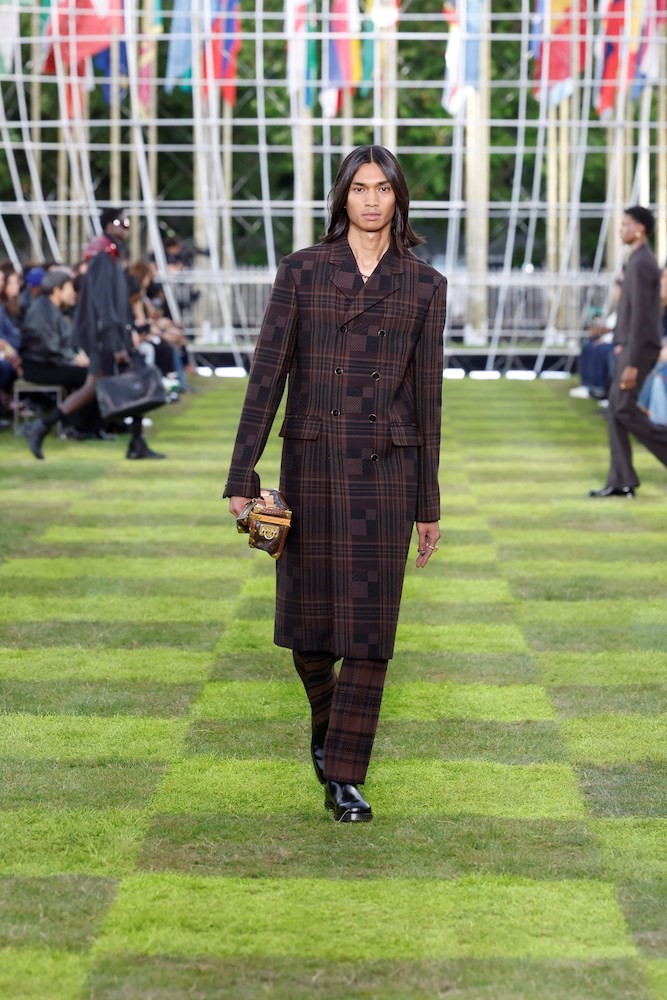
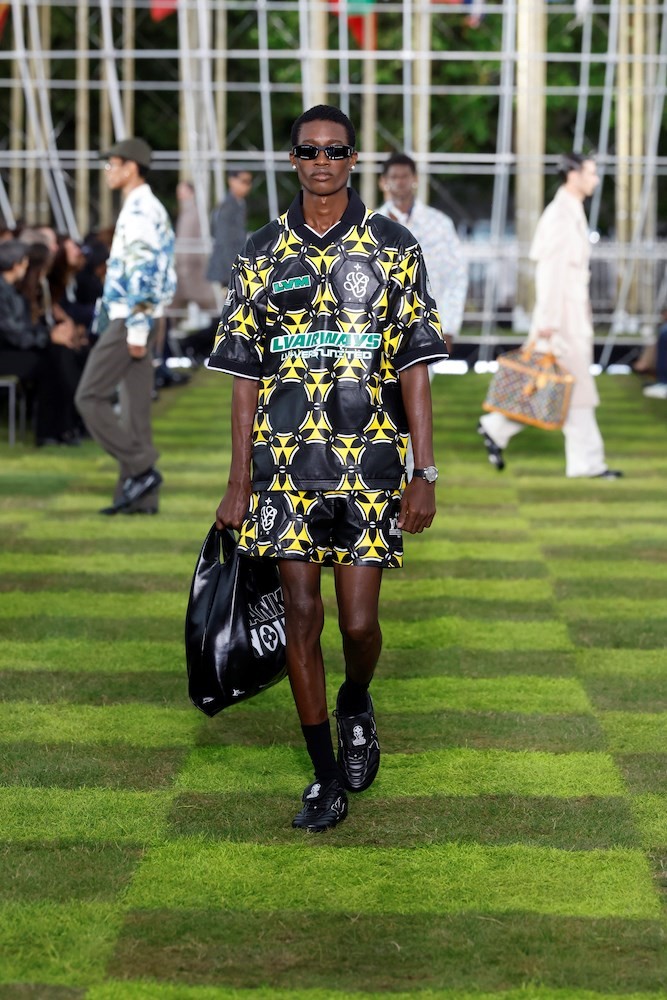
“There is no household in the world that doesn’t have [contact with] Louis Vuitton” said the brand’s CEO Pietro Beccari earlier this year. And he’s right – both part of Williams’ remit and his automatic advantage is how he plugs into a cross-section of culture, music and fashion lovers alike, on multiple levels. He has a universal appeal and a universal eye. He also is not precious and understands that Vuitton should be – indeed, must be – something bigger than the sum of its parts. So although the bags in this collection were great – archival shapes squished-up and made sloppy, with big zips scarring their way through the normally rigid fittings and fixtures, and the joke of ‘YOUR NAME’ printed bold in the place where personalised initials would normally sit (whether that’s an invitation to customise, or a proposed permanent pun, I’m not entirely sure) – they weren’t the main point.
That could be sacrilegious at Vuitton, in the same way that former creative director Marc Jacobs’ almost handbag-free debut was seen as an affront, some 25 years ago. FYI, Jacobs was the first to bring Williams to Vuitton, recognising its possibility to appeal to not just the fashion world, but the world full-stop. And today Vuitton speaks about itself as a cultural maison, embedding itself in something bigger than fashion. And that’s how Williams’ collections should be judged – not as showcases of products, but as statements of intent, with their own (his own) soundtracks, and meanings. And here, their message of universality and bringing people together – on the eve of the Olympics – spoke volumes. As Williams himself told me of his appointment almost exactly a year ago: “This is beyond clothes.”
